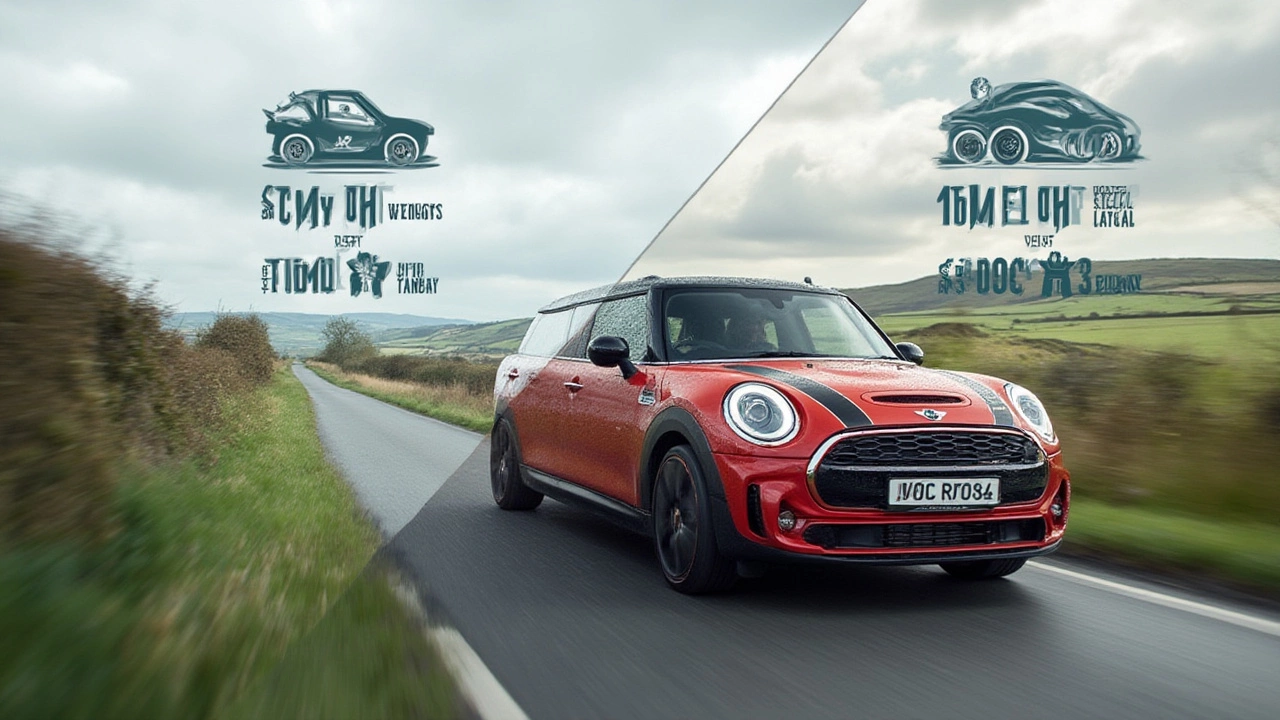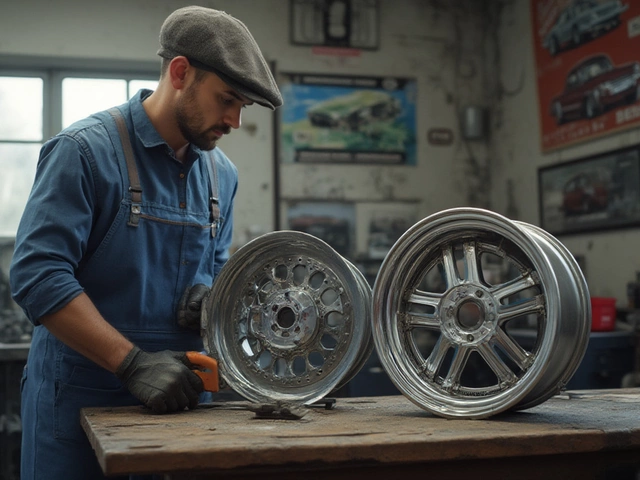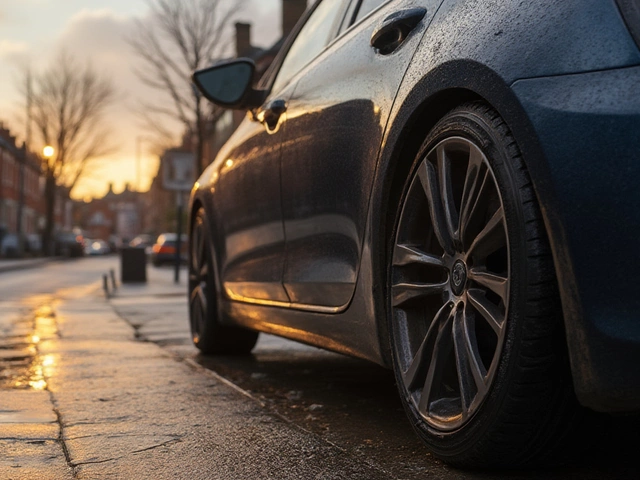You know those cars that just seem to have an extra sparkle—even when they haven’t been washed in weeks? There’s a good chance they’re rolling on alloy rims, and not the standard steel ones most folks are used to. At first glance, wheels are just circles to get you from A to B. But once you dig in, the gap between alloy and steel rims gets a lot more interesting, and it shows up in your car’s weight, how it drives, its looks, and even your wallet. If you’ve never given a second thought to what’s supporting your tires, now’s the time—the right choice can change the whole feel of your ride, especially if you’re road tripping, weather’s weird, or you just want to flex at a red light.
What Makes Alloy Rims Different from Normal (Steel) Rims?
Alloy rims are made—no surprise here—out of alloys, often a mix of aluminum and a handful of other metals, sometimes magnesium, sometimes trace metals like nickel or titanium. Steel rims, on the other hand, are old faithful: just pressed or welded sheets of steel, sturdy and a bit heavy. Here’s where things start getting juicy. Steel is dense and super tough, but it adds a lot of weight down there near your tires. Alloys are much lighter because aluminum isn’t as dense, and it doesn’t take as much to make the same shape. That means you’re saving weight at the corners of your car—an easy win for anyone who actually enjoys driving, or just wants better gas mileage.
But it’s not just about weight. Alloys cool down faster because they let heat escape more quickly, which matters when you’re braking hard or stuck in stop-and-go traffic. Steel, with its heavier bulk, actually holds onto heat. Plus, steel is more likely to bend under a hard pothole impact instead of cracking, while an alloy rim under that same whack might just break, leaving you stuck (but there’s a flip side: steel bends can sometimes be hammered out at the local tire shop, while a cracked alloy usually needs to be replaced).
Interested in the numbers? Here’s a simple side-by-side for the engineers at heart:
| Feature | Alloy Rims | Steel Rims |
|---|---|---|
| Material | Aluminum Alloy (with other metals) | Pressed/Welded Steel |
| Weight | Light (7-12 kg typical for 17") | Heavier (10-16 kg typical for 17") |
| Heat Dissipation | Excellent | Good |
| Cost | Higher ($150–$500+ per rim) | Lower ($50–$150 per rim) |
| Strength | Resists corrosion, can crack | Tough, bends before breaking |
| Looks | Shiny, customizable, lots of styles | Plain (usually black, silver), few styles |
Performance, Handling, and Everyday Driving
If you love taking corners or want your car to feel more lively, this is the section that matters. That reduced weight from alloy rims removes what engineers call unsprung mass—that’s weight that sits below your suspension, so it makes a big difference in how your car reacts when you hit a bump or go around a curve. Less unsprung mass means better steering response, faster acceleration, and noticeably smoother handling. Ever try lifting two bike wheels, one super light, one clunky and heavy? Now imagine that multiplied by the four main points connecting your car to the road, and you get why alloys make a difference. Racers and performance cars nearly always roll on alloys for this exact reason.
Steel rims fight back when you’re talking about toughness and harsh weather. If you live somewhere that chews up the roads every winter with salt, gravel, and endless freezing/thawing, steel rims are like old work boots—they look rough but shrug off abuse. Alloys are more prone to cosmetic dings from curb rash and salt can eat away at clearcoat finishes, leaving whiteish scars. But here’s the cool twist: Modern alloys have gotten tougher and are finished with better coatings than a decade ago. Most factory alloys now last nearly as long in harsh conditions—so unless you’re leaving your ride outside in a salty snowbank every year, this gap’s closing.
- Tip: Consider alloy rims if you want sharper cornering, faster starts, and less stress on your shock absorbers (especially if you upgrade to sporty low-profile tires).
- Tip: For ride-sharing cars or work vehicles that face potholes and road hazards daily, steel rims may save your wallet down the line.
Anyone who drives in heavy snow knows the value of tough steel—the rim dings, the car keeps going, and you can pound a bent wheel halfway back to straight in a pinch. Alloy cracks are rare, but if you hit just the wrong pothole, you could be calling for a tow.

Style, Customization, and Curb Appeal
The first thing people spot at car shows? Wheels. Pull up on slick, multi-spoke alloys and you get a few more head turns. Alloys come in pretty much every look you can dream up—matte black, mirror-shine chrome, colored accents, even polka dots (if you thought that was cool). Steel rims, on the other hand, mostly look like—well, steel. Sometimes they get dressed up with cheap plastic hubcaps, but almost everyone can spot the difference. Want to show off? Alloy rims carry a badge of cool that’s impossible to fake, which is why you’ll see even factory-standard cars now coming stocked with fancier alloys right off the lot.
💡 Here’s a tip: Many car shops offer custom painting and powder coating. That means whether you want to match your rims to your car’s color or go full neon green, you probably can. Just keep in mind custom work drives the price up and might require extra care, especially in winter climates.
For a lot of folks, the more “show” you add, the higher the risk for curb rash—those ugly scrapes from parking close. Some drivers keep a second set of rugged steel rims just for winter, swapping their glossy alloys back in once spring rolls around. If you’re worried about resale value, clean, scuff-free alloys can boost the appeal big time, especially with younger buyers or anyone eyeing a sportier look.
- Tip: If you go DIY on rim cleaning, skip the harsh wire brushes—both steel and alloy finishes can get scratched up fast. Stick with soft brushes, dedicated wheel cleaners, and dry towels.
- Tip: Curb protectors—those rubber rings—can save your alloys from nasty scrapes and aren’t a bad investment if you park downtown a lot.
Cost, Longevity, and Making the Right Choice
You’ve probably noticed alloys cost more—sometimes a lot more. A basic 17-inch steel rim might set you back $70, but a good-looking alloy in the same size could be $250 or more, and that’s before any custom finishes. Still, alloys often pay for themselves in better ride quality, improved handling, and a sharp look. But if you’re not chasing performance or curb appeal, steel rims are tough to beat budget-wise, and easier to repair in most shops. Some people buy two sets: basic steelies for harsh weather, and nice alloys for the sunny months. That combo lets you protect your investment and ride with style when it actually counts.
Worried about damage? Tires wear out way faster than either type of rim, but it’s worth keeping an eye on salt corrosion and small dings, especially with alloys. Small chips in the finish can turn ugly if water gets underneath, so a quick touch-up paint job can save you money over time. And, for electric or hybrid cars, the lighter weight of alloys can even squeeze out a little extra battery range—something that starts to matter if you’re driving long distances on the cheap.
Verdict? There’s no “best rim” for everyone. City drivers bouncing off curbs every week might prefer the rugged loyalty of steel. Sunday drivers or folks who want every ounce of performance lean hard into alloys. And if you’re just looking to personalize your ride and don’t mind the price tag, alloys lay out the widest menu. Reach a little deeper into your pocket if you want a rim that does double duty: looks good and actually makes your driving safer and more fun. Chance are, that shiny spinning circle is doing a lot more for your daily drive than you ever noticed—and now, when someone asks you which is better, you'll have plenty more to say than “well, this one looks nice.”

